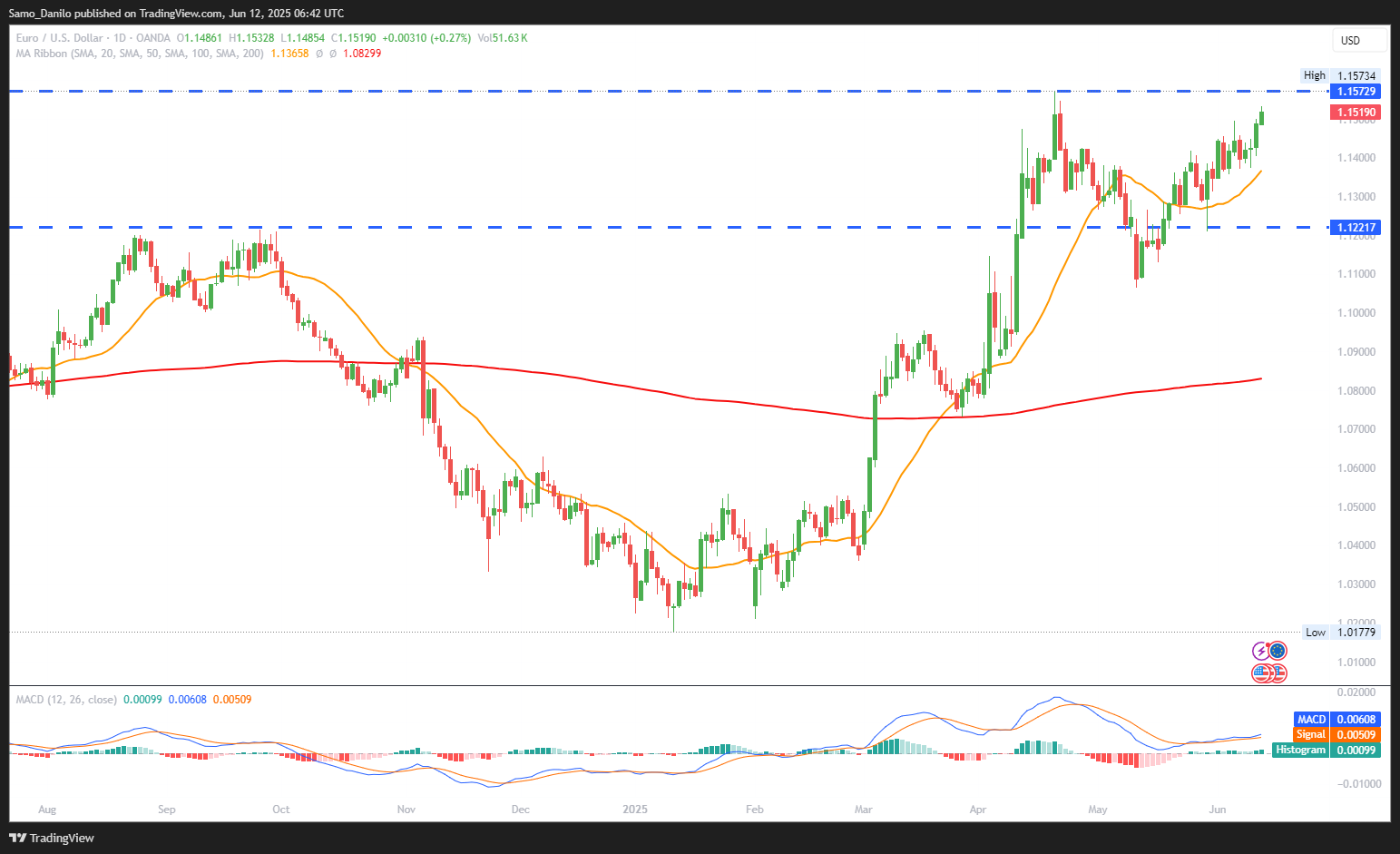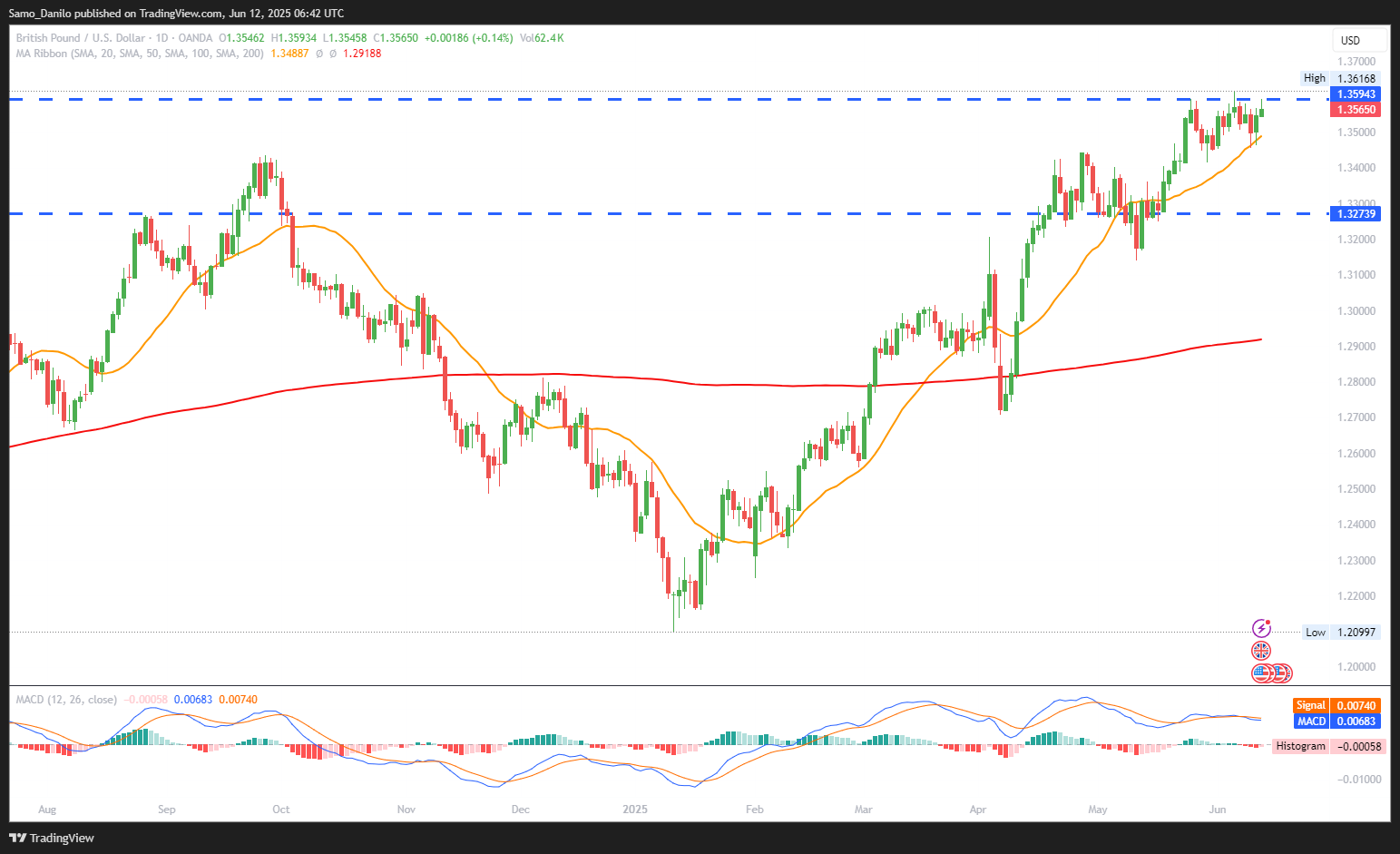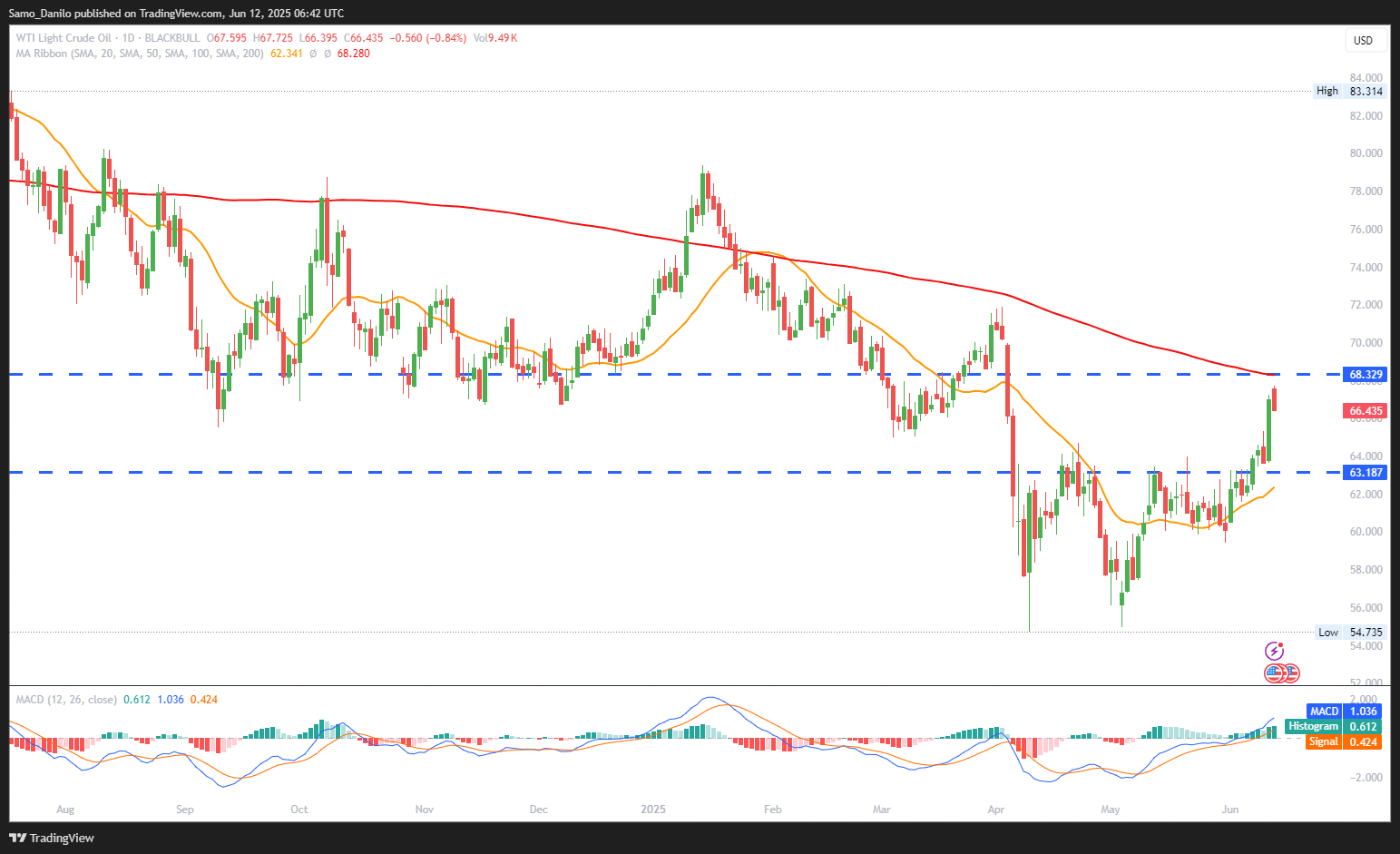EURUSD
- EUR/USD Price: The EUR/USD extends its weekly uptrend, climbing to 1.1530 on Thursday — its highest level since April 22. The pair remains well-bid amid broad-based US Dollar weakness.
- Fed Rate Cut: The US Dollar retests its monthly low as traders increase bets that the Federal Reserve may resume rate cuts in September, especially following mixed labor market data and moderating inflation.
- Tariff Threat: President Trump signaled a unilateral move on trade, saying he will impose new tariffs and notify trading partners within the next two weeks: “This is the deal — take it or leave it.” The announcement weighed further on market sentiment toward the USD.
- ECB Hawkishness: The European Central Bank continues to signal that it is near the end of its rate-cutting cycle, with recent comments adding to the euro’s strength. The contrast in monetary policy outlooks between the Fed and ECB lends support to the pair.
- US Data: Traders will focus on U.S. Producer Price Index (PPI) data and Weekly Initial Jobless Claims later Thursday for confirmation of disinflation trends and labor market health, which could further steer Fed expectations.
Closing statement: EUR/USD maintains bullish momentum as diverging central bank expectations and Trump’s trade rhetoric weigh on the USD. Upcoming U.S. inflation and labor data will be critical in determining the pair’s next direction.
GBPUSD
- GBP/USD Price: The British Pound trims earlier gains, with GBP/USD retreating toward 1.3550 in Thursday’s European session. The move follows disappointing UK macroeconomic data, which has dampened bullish sentiment.
- UK GDP: The UK GDP fell by 0.3% in April, compared to a 0.1% decline expected while the industrial data missed forecasts, exerting downward pressure on the Pound Sterling.
- Production Data: Data from the UK showed that monthly Industrial and Manufacturing Production dropped by 0.6% and 0.9%, respectively, in April. Both readings fell short of market expectations.
- China News: China’s foreign ministry reiterated it will honor its trade commitments, responding to President Trump’s assertion that a deal with China is “done.” This eased some geopolitical tension and helped risk appetite stabilize.
- US Inflation Data: US CPI data came in softer than expected for the fourth consecutive month. Core services inflation is at its lowest since mid-2021, and shelter inflation returned to pre-COVID levels, reinforcing bets on a Fed rate cut in September.
Closing statement: Despite a softer US Dollar, GBP/USD faces downside risks amid weak UK economic data and growing expectations of BoE policy easing. The pair’s next direction may hinge on Friday’s UK economic prints and follow-through on global trade developments.
XAUUSD
- XAU/USD Price: Gold (XAU/USD) climbs for the second consecutive session, reaching around $3,370, its highest level in a week during Thursday’s European hours. The move reflects sustained safe-haven demand and dovish Fed expectations.
- US CPI Data: Wednesday’s data showed US consumer prices rose less than expected in May, strengthening market conviction that the Federal Reserve may resume cutting rates as soon as September, which in turn weighed on the US Dollar and supported gold prices.
- Ukraine Conflict: Russia intensified retaliatory strikes on Kharkiv, Ukraine’s second-largest city, escalating regional tensions. The conflict continues to fuel safe-haven demand for gold, particularly amid growing military volatility.
- Tariff Deadline: President Trump indicated flexibility on the July 8 tariff deadline, offering more time for trade negotiations. While this adds some calm to markets, uncertainty surrounding global trade policy continues to support gold as a hedge.
- US PPI Data: US Producer Price Index (PPI) is due later in the day, with annual inflation forecasted at 2.6%, and core PPI expected at 3.1%. Any downside surprise could reinforce dovish Fed bets, further lifting gold prices.
Closing statement: XAU/USD remains well-supported amid dovish Fed expectations and escalating geopolitical tensions. A softer PPI print could provide additional tailwinds, with gold’s trajectory likely remaining bullish in the near term.
CRUDE OIL
- Crude Oil Price: West Texas Intermediate (WTI) is trading around $66.50 during the European session, continuing its upward momentum on a mix of geopolitical tensions and solid US inventory data.
- Geopolitical Developments: Reuters reported that the US will partially evacuate its Iraqi embassy and allow military dependents to leave certain Middle Eastern areas due to rising security threats, highlighting growing geopolitical instability that supports oil prices.
- US-Iran Diplomacy: Axios reports that White House envoy Steve Witkoff is scheduled to meet Iranian Foreign Minister Araghchi in Muscat on Sunday to discuss Tehran’s counterproposal. The outcome could impact sanctions and future Iranian oil exports, creating headline risk for crude markets.
- China Visa Policy: China’s extension of 10-day visa-free transit access to 55 countries is expected to boost international tourism and marginally support global oil demand by increasing travel-related consumption.
- EIA Report: EIA data revealed a 3.644 million barrel drop in US crude inventories for the week ending June 6, reinforcing signs of strong domestic demand, though slightly below the previous week's drawdown of 4.3 million barrels.
Closing statement: WTI remains supported by geopolitical tensions and improving demand signals, including a substantial draw in US inventories and incremental reopening from China. The upcoming US-Iran talks and regional security dynamics may inject further volatility into crude prices.
DAX
- DAX Price: The DAX continues to retreat, currently heading toward 23,740, marking further distance from its record high of 24,479 set last week. Notably, the index fell below its 21-day moving average for the first time since mid-April, indicating a weakening short-term trend.
- US-China Trade: President Trump’s comment that both the US and China agreed to reduce export restrictions on rare earths brought limited relief. Investors remained cautious, interpreting the development as incremental, with uncertainty still clouding broader trade dynamics.
- Investors Survey: According to a Schroders survey, 63% of institutional investors and wealth managers cite trade tariffs as their primary macroeconomic concern, reinforcing the notion that geopolitical risks are a major drag on European equity sentiment, particularly for export-heavy Germany.
- EIB Boost: The European Investment Bank tripled its defense financing initiative to €3 billion, partnering with Deutsche Bank to direct funds to EU military firms. While strategically important, the move has had little immediate impact on the DAX, but reflects a longer-term policy shift in EU capital flows.
- Geopolitical News: Reports that Israel may be ready to launch an operation into Iran—and that US officials have advised citizens to exit the region—have contributed to elevated geopolitical risk, indirectly pressuring European equities amid global uncertainty.
Closing statement: The DAX remains under pressure, driven by technical weakness and lingering macroeconomic and geopolitical concerns. Tariff anxieties, conflict risks, and cautious sentiment around US-China trade talks suggest limited upside in the near term, with downside risks building.




